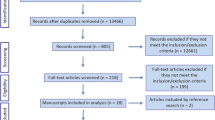Abstract
We investigated the physiological basis of the 'broken escalator phenomenon', namely the sensation that when walking onto an escalator which is stationary one experiences an odd sensation of imbalance, despite full awareness that the escalator is not going to move. The experimental moving surface was provided by a linear motor-powered sled, moving at 1.2 m/s. Sled velocity, trunk position, trunk angular velocity, EMG of the ankle flexors-extensors and foot-contact signals were recorded in 14 normal subjects. The experiments involved, initially, walking onto the stationary sled (condition Before). Then, subjects walked 20 times onto the moving sled (condition Moving), and it was noted that they increased their walking velocity from a baseline of 0.60 m/s to 0.90 m/s. After the moving trials, subjects were unequivocally warned that the platform would no longer move and asked to walk onto the stationary sled again (condition After). It was found that, despite this warning, subjects walked onto the stationary platform inappropriately fast (0.71 m/s), experienced a large overshoot of the trunk and displayed increased leg electromyographic (EMG) activity. Subjects were surprised by their own behaviour and subjectively reported that the 'broken escalator phenomenon', as experienced in urban life, felt similar to the experiment. By the second trial, most movement parameters had returned to baseline values. The findings represent a motor aftereffect of walking onto a moving platform that occurs despite full knowledge of the changing context. As such, it demonstrates dissociation between the declarative and procedural systems in the CNS. Since gait velocity was raised before foot-sled contact, the findings are at least partly explained by open-loop, predictive behaviour. A cautious strategy of limb stiffness was not responsible for the aftereffect, as revealed by no increase in muscle cocontraction. The observed aftereffect is unlike others previously reported in the literature, which occur only after prolonged continuous exposure to a sensory mismatch, large numbers of learning trials or unpredictable catch trials. The relative ease with which the aftereffect was induced suggests that locomotor adaptation may be more impervious to cognitive control than other types of motor learning.





Similar content being viewed by others
References
Anstis S (1995) Aftereffects from jogging. Exp Brain Res 103:476–478
Bedford FL (1999) Keeping perception accurate. Trends Cogn Sci 3:4-11
Bizzi E, Tresch MC, Saltiel P, d'Avella A (2000) New perspectives on spinal motor systems. Nat Rev Neurosci 1:101–108
Carey DP (2001) Do action systems resist visual illusions? Trends Cogn Sci 5:109–113
Carpenter MG, Frank JS, Silcher CP, Peysar GW (2001) The influence of postural threat on the control of upright stance. Exp Brain Res 138:210–218
Cham R, Redfern MS (2002) Changes in gait when anticipating slippery floors. Gait Posture 15:159–171
Clower DM, Boussaoud D (2000) Selective use of perceptual recalibration versus visuomotor skill acquisition. J Neurophysiol 84:2703–2708
Durgin FH, Pelah A (1999) Visuomotor adaptation without vision? Exp Brain Res 127:12–18
Gordon CR, Fletcher WA, Melvill JG, Block EW (1995) Adaptive plasticity in the control of locomotor trajectory. Exp Brain Res 102:540–545
Held R (1965) Plasticity in sensory-motor systems. Sci Am 213:84–94
Jensen L, Prokop T, Dietz V (1998) Adaptational effects during human split-belt walking: influence of afferent input. Exp Brain Res 118:126–130
Jurgens R, Boss T, Becker W (1999) Podokinetic after-rotation does not depend on sensory conflict. Exp Brain Res 128:563–567
Karniel A, Mussa-Ivaldi FA (2002) Does the motor control system use multiple models and context switching to cope with a variable environment? Exp Brain Res 143:520–524
Lackner JR, DiZio P (1994) Rapid adaptationto Coriolis force perturbations of arm trajectory. J Neurophysiol 72:299–313
Marigold DS, Patla AE (2002) Strategies for dynamic stability during locomotion on a slippery surface: effects of prior experience and knowledge. J Neurophysiol 88:339–353
Norris SA, Greger BE, Martin TA, Thach WT (2001) Prism adaptation of reaching is dependent on the type of visual feedback of hand and target position. Brain Res 905:207–219
Osu R, Franklin DW, Kato H, Gomi H, Domen K, Yoshioka T, Kawato M (2002) Short- and long-term changes in joint co-contraction associated with motor learning as revealed from surface EMG. J Neurophysiol 88:991–1004
Pavol MJ, Pai YC (2002) Feedforward adaptations are used to compensate for a potential loss of balance. Exp Brain Res 145:528–538
Pelah A, Barlow HB (1996) Visual illusion from running. Nature 381:283
Pijnappels M, Bobbert MF, Dieen JH van (2001) Changes in walking pattern caused by the possibility of a tripping reaction. Gait Posture 14:11–18
Scheidt RA, Dingwell JB, Mussa-Ivaldi FA (2001) Learning to move amid uncertainty. J Neurophysiol 86:971–985
Shadmehr R, Mussa-Ivaldi FA (1994) Adaptive representation of dynamics during learning of a motor task. J Neurosci 14:3208–3224
Weber KD, Fletcher WA, Gordon CR, Melvill JG, Block EW (1998) Motor learning in the "podokinetic" system and its role in spatial orientation during locomotion. Exp Brain Res 120:377–385
Witney AG, Vetter P, Wolpert DM (2001) The influence of previous experience on predictive motor control. Neuroreport 12:649–653
Wolpert DM, Flanagan JR (2001) Motor prediction. Curr Biol 11:729–732
Author information
Authors and Affiliations
Corresponding author
Rights and permissions
About this article
Cite this article
Reynolds, R.F., Bronstein, A.M. The broken escalator phenomenon. Exp Brain Res 151, 301–308 (2003). https://doi.org/10.1007/s00221-003-1444-2
Received:
Accepted:
Published:
Issue Date:
DOI: https://doi.org/10.1007/s00221-003-1444-2




